
Ever since Oshkosh received a $6 billion contract from the United States Postal Service for the development of a new mail delivery vehicle, the contract has drawn controversy. Oshkosh’s plan includes primarily gas-powered vehicles, and it won out over another plan for all-electric vehicles. Now the White House is urging the Postmaster General to fulfill his responsibilities and accelerate the modernization of the delivery vehicle fleet.
History of the USPS NGDV
The current postal vehicle fleet is aging and long overdue for an upgrade. The most widespread postal vehicle today is the Grumman LLV (Long Life Vehicle). With its production running from 1987 to 1994, it has certainly lived up to its name. But with the LLV’s heater being prone to catching fire and rising maintenance costs, an environmentally friendly replacement is needed.
The USPS began its search for this replacement NGDV (Next Generation Delivery Vehicle) back in 2015. A case study called out the fact that the Postal Service’s history with electric vehicles dates back to 1899 when the EV was competing with horses, not gas cars. Yet, somewhat inexplicably, Oshkosh won the contract in February 2021, not for a fleet of EVs but for a fleet consisting largely of gasoline vehicles.
Congress did not seem overly happy with this idea:
In response to this announcement, Representative Jared Huffman of California says he will introduce legislation to ensure that the USPS contract consists of at least 75% electric or zero-emission vehicles.
Another representative, Mary Kaptur of Ohio, says she will introduce a bill intending to put a pause on the contract while questions of corruption and consistency with Biden’s executive order are answered. She, Ryan, and Ohio Senator Sherrod Brown all sent a letter to Biden requesting a halt to the Oshkosh contract.
Kaptur is referring to Biden’s plan for the full electrification of the Federal vehicle fleet.
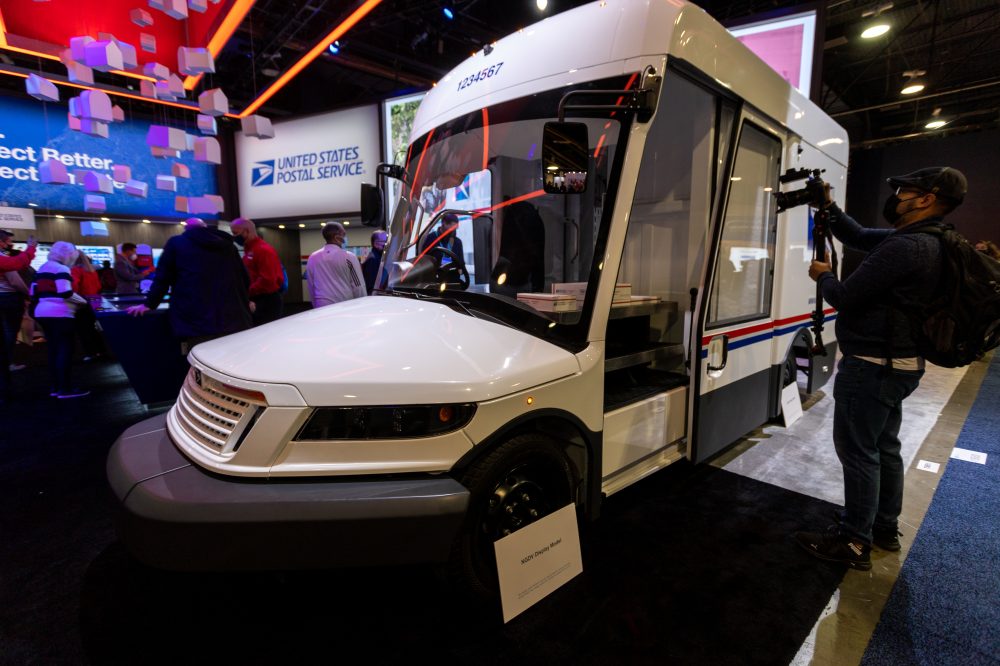
White House reaches out to Postmaster General Dejoy
Now, it seems the Biden administration is pushing the USPS to electrify the fleet more fully. In a letter sent on February 2 to Postmaster General Dejoy from Brenda Mallory, chair of the White House Council on Environmental Quality, the White House urges the Postal Service to “fulfill its National Environmental Policy Act (NEPA) responsibilities, improve its competitiveness, tackle the climate crisis, and address environmental injustice by accelerating the modernization and electrification of its delivery vehicle fleet through the procurement of its Next Generation Delivery Vehicle (NGDV).”
The letter goes on to call out the Environmental Protection Agency’s “grave concerns” with the environmental review conducted in the process of procurement of the NGDVs. Some of the concerns brought up can be remedied, such as using up-to-date info on electric vehicles to correct the “deficiencies in the environmental impact statement.”
The letter also brings up concerns that can not be so simply remedied, such as the commitment of $480 million for the engineering and construction of a factory before the start of an environmental review of the Postal Service’s procurement decision.
…Through NGDV, USPS has the option to achieve 70 percent electrification of the delivery vehicle fleet by the end of this decade… at a time when our international competitors are moving rapidly to electrify their transportation systems, and leading U.S. companies, including major delivery companies, are rapidly advancing American Competitiveness by electrifying their fleets and showing how the U.S. leads by example.
This transition to a modern, clean, and efficient USPS vehicle fleet is a top priority of the Biden Administration. To address the climate crisis, President Biden has called on us to seize the once-in-a-generation economic opportunity we have to create and sustain jobs, including well paying union jobs; support a just transition to a more sustainable economy for American workers; strengthen America’s communities; protect public health; and advance environmental justice.
… We will continue to do everything we can to support USPS fleet electrification efforts, including budgetary and technical assistance in addressing the issues I have discussed.

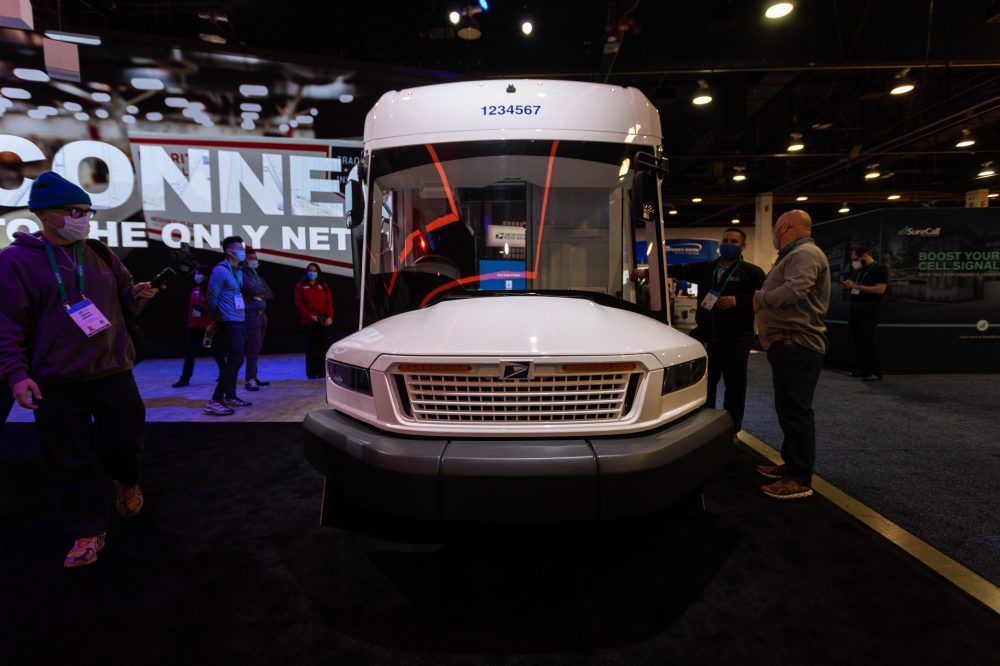
EPA concerns about NGDV plan
Also on February 2, a similar letter was sent by Environmental Protection Agency Associate Administrator Vicki Arroyo to the USPS Senior Director of Environmental Affairs and Corporate Sustainability detailing the specific issues the EPA had with the USPS NGDV acquisitions.
The EPA review found that, “the EPA’s concerns with the draft EIS [Environmental Impact Statement] were not adequately addressed and that the final EIS remains seriously deficient.” Arroyo went on to list several “key deficiencies.”
Key deficiencies include the fact that contrary to NEPA’s requirements, a contract for this proposal was awarded prior to the NEPA process, critical features of the contract are not disclosed in the EIS, important data and economic assumptions are missing in the EIS, and the EIS failed to consider a single feasible alternative to the proposed action. Specifically, the final EIS does not disclose essential information underlying the key analysis of Total Cost of Ownership (TCO), underestimates greenhouse gas (GHG) emissions, fails to consider more environmentally protective feasible alternatives, and inadequately considers impacts on communities with environmental justice concerns.
This is no short list of concerns, and they “render the final EIS inconsistent with the requirements of NEPA and its implementing regulations.” As a result of this, the environmental impact statement will need to be revised and reopened for public comment.
The letter is clear and harsh, calling out the USPS for its flawed process, noting that, “The Postal Service chose not to consider in detail even a single feasible alternative to its proposal that would be more environmentally protective, evaluating only alternatives the Postal Service itself considered to be infeasible (e.g., 100 percent BEVs given longer rural routes).”
The letter goes into detail on the proposed gas fleet, noting that the proposed ICE NGDVs deliver a mediocre improvement of 0.4 mpg over the existing fleet developed over 30 years ago, meaning the updated vehicles would get 8.6 miles per gallon…
An updated fleet of 90 percent ICE vehicles and 10 percent BEVs would reduce “relevant emissions by 21.7 percent after ten years,” but the letter notes these new vehicles under the plan would cause climate damage that “would exceed $900 million.”
The EPA ends the letter by recommending, “the Postal Service prioritize initially purchasing BEVs, consistent with any existing contract obligations,” and requesting a meeting.
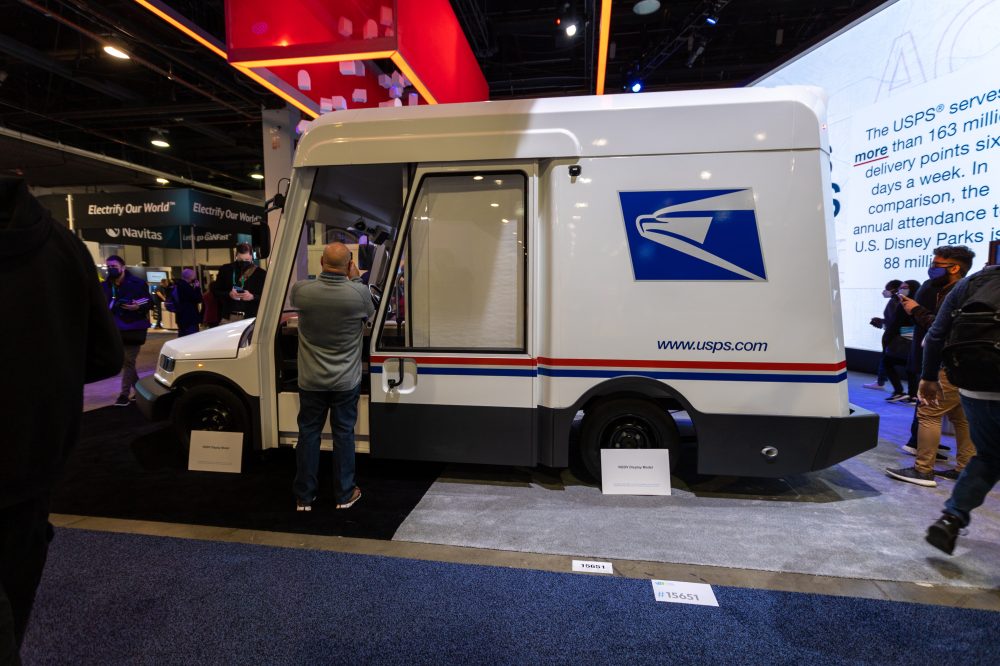
Electrek’s take
Quite frankly, each of these letters is worth a read – in full. It’s hard to come up with an excuse for the number of deficiencies in the Postmaster’s plan. The Post Offices analysis assumed a static price for battery electric vehicles, which simply doesn’t align with the real world, where the cost of batteries, and in turn battery electric vehicles, is decreasing.
It does not account for expected decreases in the cost of batteries, and therefore BEVs, over the 10-year acquisition.
EPA suggests that the Postal Service look to estimates compiled by the National Academy of Sciences as a starting point for potential battery price decline projections, which recently concluded that “the key cost driver for EVs is the battery, which for high-volume battery production is expected to decrease to $90-$115/kWh by 2025 and $65-$80/kWh by 2030 at the pack level.”6
The USPS also underestimated the emissions of ICE vehicles while overestimating those from electric vehicles.
Even the weight of the ICE vehicles, one pound over the weight limit for light-duty vehicle emission standards, means they are subject to less stringent emissions.
The fact that the new BEV NGDVs have 734 pounds lower payload capacity than the ICE NGDVs (2,207 pounds vs. 2,941pounds), yet still meet the relevant operational requirements, suggests that the ICE vehicles are specified to be substantially larger than they need to be, which permits them to be much higher emitting given that they are subject to less stringent standards.
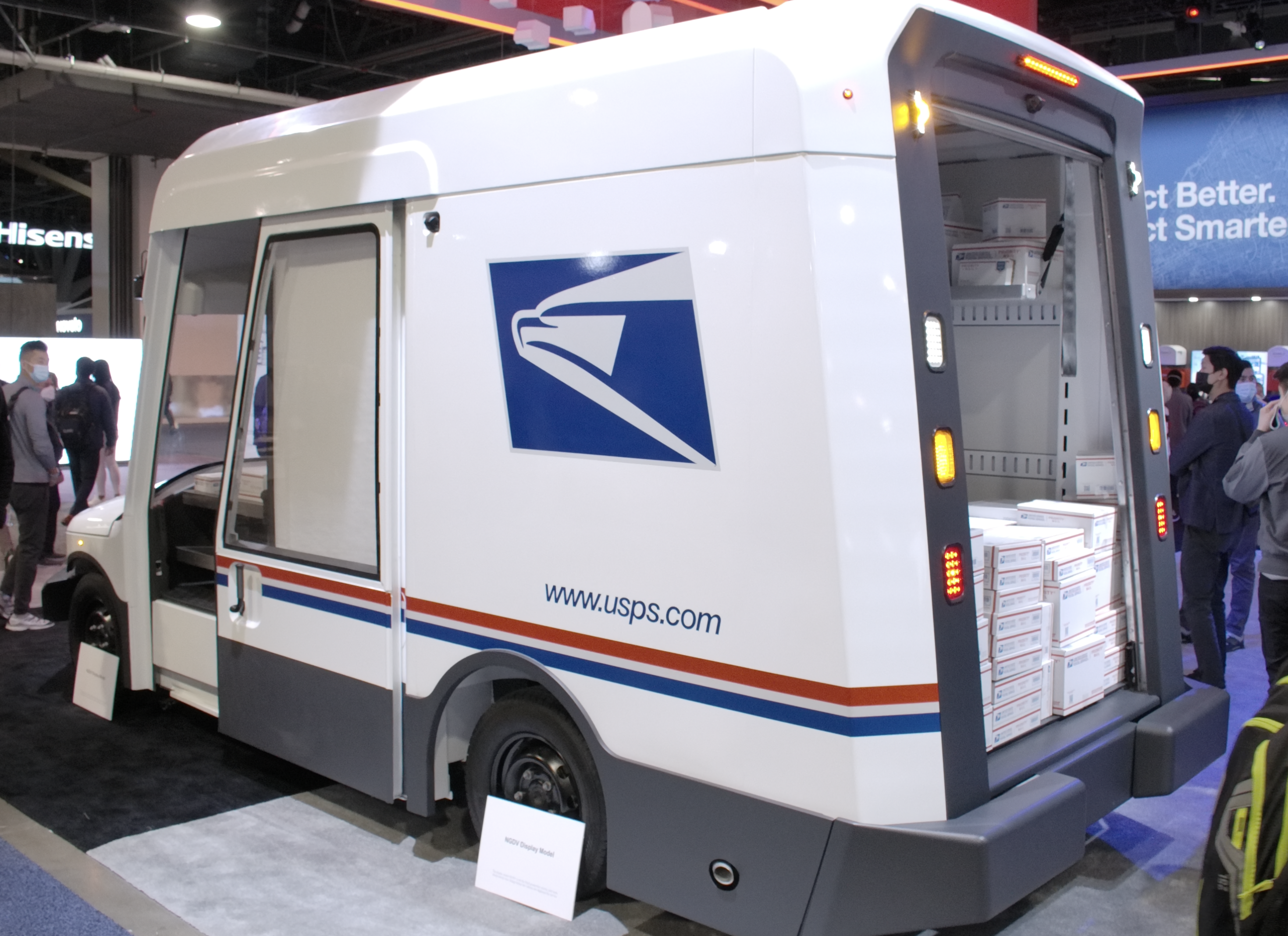
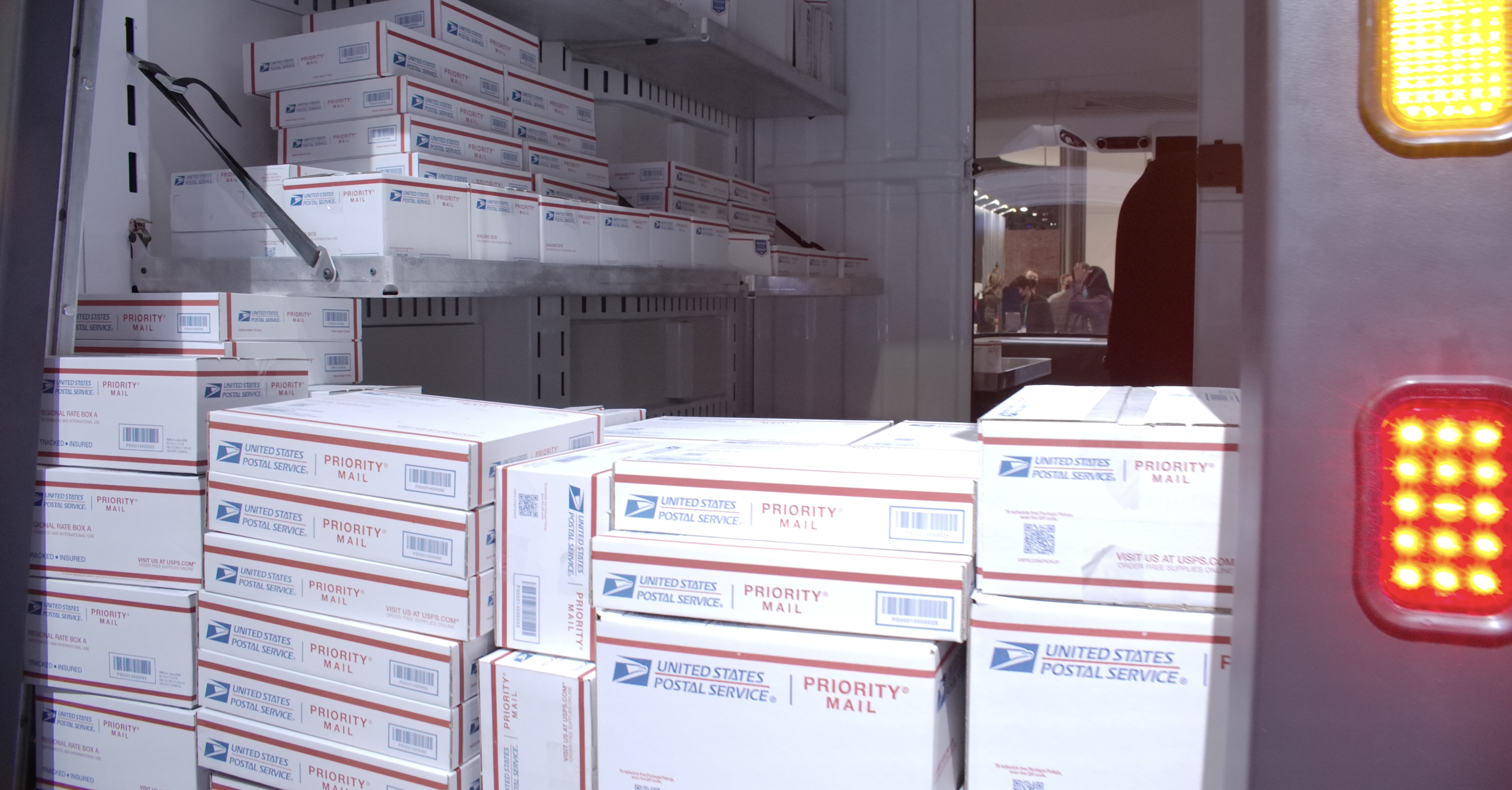
With the very short distance of most postal routes (95% are less than 70 miles), even something like the Ford E-transit that Electrek’s Seth Weintraub checked out recently, with its 108-126 mile estimated range and mid $40k price, could go the distance. The USPS estimates that the BEV versions of the NGDV would cost $30k more than the ICE counterparts is clearly unreasonable, and the USPS should consider lower EVs to directly meet those needs. Ford had entered its bid to provide NGDVs but was not selected (though it is providing the engines for Oshkosh’s fleet, as the military contractor notably does not have experience in the small, consumer vehicle market).
The vehicles and technology exist for the Postal Service to go electric, and it needs to. Sure, there are a few routes where a gas vehicle may offer some advantages, but the majority of the fleet needs to go electric, not a mediocre ten percent.
Post Offices have regular, short routes, and locations to store the delivery vehicles overnight. This is the perfect use case for electric vehicles. The common excuses that nay-sayers of EVs like to throw around of “the range isn’t enough”, “where will I charge”, and “they’re more expensive” simply aren’t factors here. The distance traveled each day is well known and consistent, and the long-term cost of the BEVs, in maintenance and environmental impact, needs to be considered.
It’s hard not to put all of this blame on Dejoy. He is a Trump administration holdover with multiple conflicts of interest (investment in UPS, Amazon, and a USPS sub-contractor) and no experience as a postal carrier. He drew plenty of criticisms during the 2020 election for making moves that would slow the delivery of mail in the name of cost-cutting. The Postmaster can’t be removed by the president, only the board of governors, but the best bet for the future of USPS is his removal and replacement with someone who will actually care about the environment and the future of the Postal Service.
Letter to the USPS from the White House
Letter to the USPS from the EPA
Author: Derek Wise
Source: Electrek



